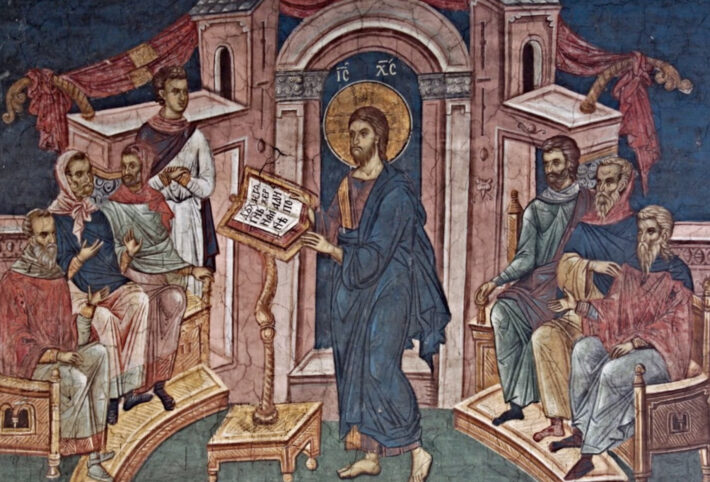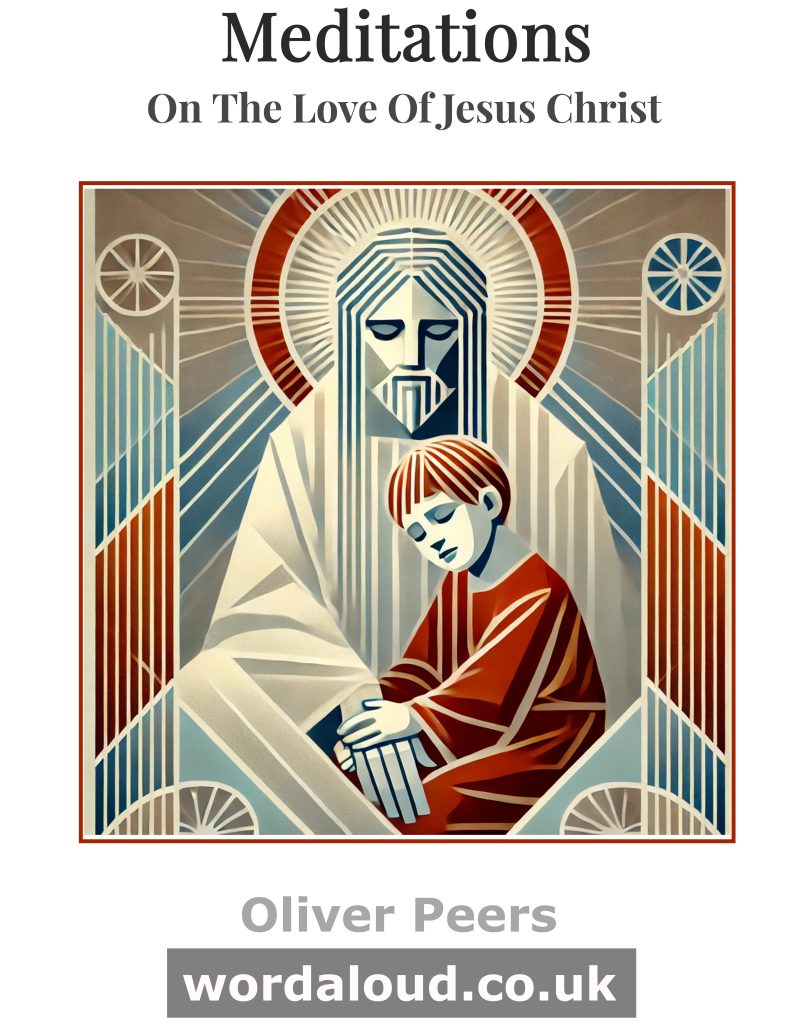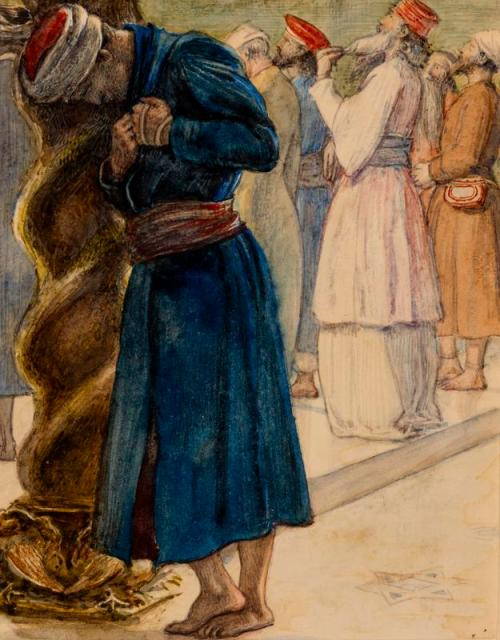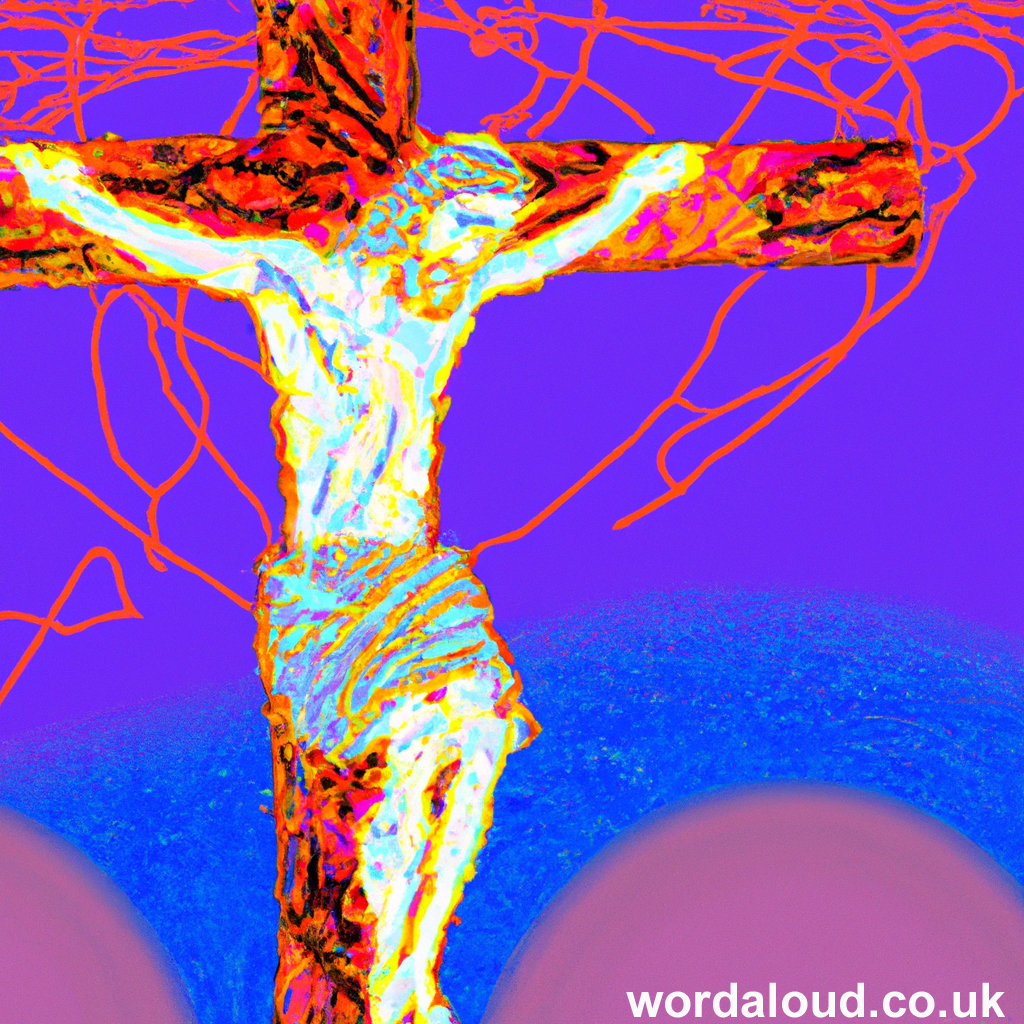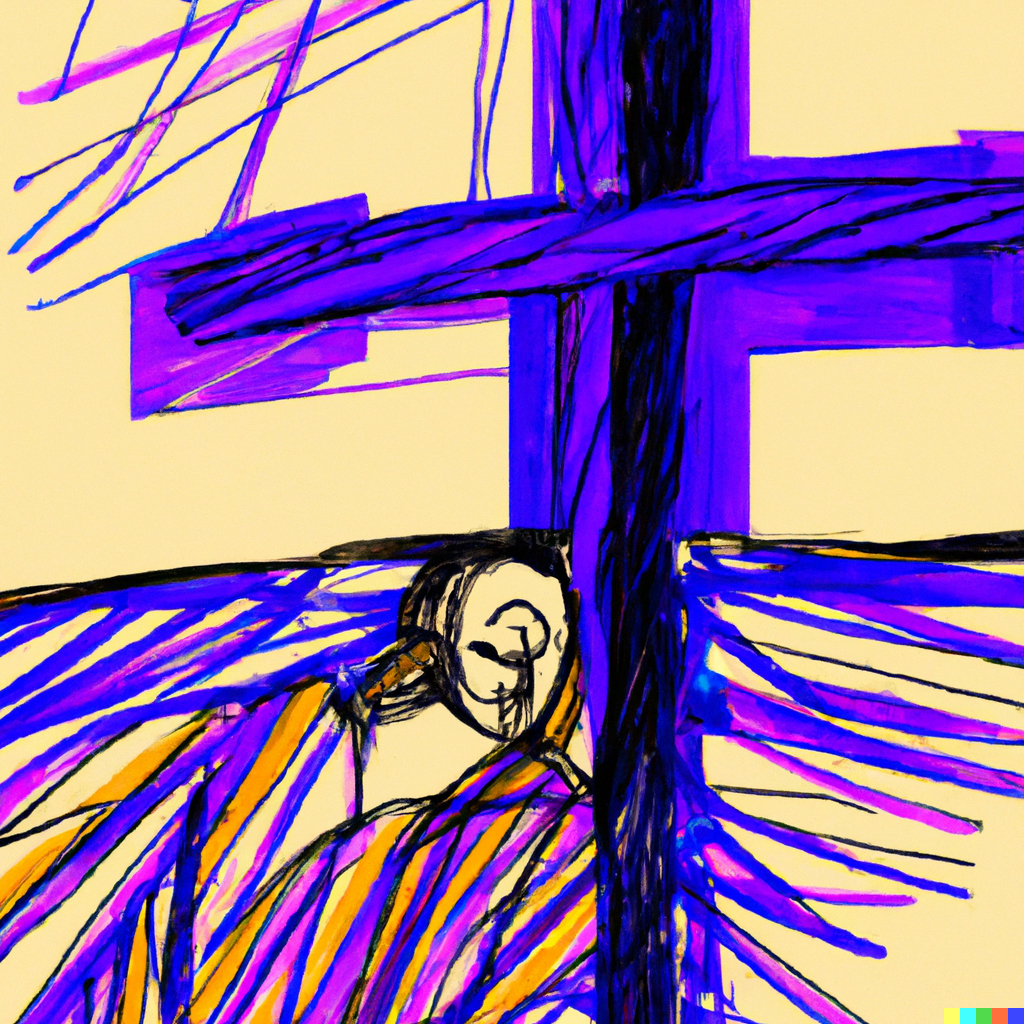Christian Art | Jesus In The Synagogue In Capernaum
Luke 4: 31-37 – Week 22 Ordinary Time, Tuesday (King James Audio Bible KJV, Spoken Word)
31 And came down to Capernaum, a city of Galilee, and taught them on the sabbath days.
32 And they were astonished at his doctrine: for his word was with power.
33 ¶ And in the synagogue there was a man, which had a spirit of an unclean devil, and cried out with a loud voice,
34 Saying, Let us alone; what have we to do with thee, thou Jesus of Nazareth? art thou come to destroy us? I know thee who thou art; the Holy One of God.
35 And Jesus rebuked him, saying, Hold thy peace, and come out of him. And when the devil had thrown him in the midst, he came out of him, and hurt him not.
36 And they were all amazed, and spake among themselves, saying, What a word is this! for with authority and power he commandeth the unclean spirits, and they come out.
37 And the fame of him went out into every place of the country round about.
Capernaum was a small city on the crossroad of two important routes, one from Asia Minor, leading to Petra on the south of the Transjordan, the other from the region of the two rivers, the Tigris and Euphrates, descending toward Egypt. Jesus’ move to Capernaum helped his contact with the people, and so the spreading of the Good News.
This is to be Jesus’ base for a period while he is in the region of Galilee. Capernaum constitutes something of a release from Nazareth, where Jesus’ own people rejected him, seeking to put him and keep him in the social category they thought should be his, rather than recognize Jesus as the person and Divinity he truly is.
We may wonder at how Mary and others of Jesus’ family may have thought of this, given their closeness to Jesus. We are not told in the Gospels of how Jesus’ departure from Nazareth affected his mother and father and extended family, who would have lived with him there.
The people of Capernaum are astonished at Jesus’ doctrine. They marvel at what Jesus has to say. Through this phrasing, Luke tells us once again in his Gospel that Jesus is no mere teacher of a new way of being of the people of Israel; Jesus is no mere Rabi. Rather, Luke tells us that Jesus is proclaiming himself the Son, God the Son, the inheritor of Moses’ legacy and then infinitely more, and that the Jewish people hear this in Jesus’ teaching. Their astonishment, or ‘wonder’, as in previous verses, is justified.
It is strange that in the synagogue there is a man with an unclean spirit, which is to say a devil. Such a person known as being unclean would normally be excluded from Jewish society, including and especially religious observances. Here this person is, though, and the devils possessing him feel themselves challenged by the presence of Jesus, as perhaps they have not felt themselves challenged heretofore.
In the presence of Jesus, the unclean spirit is now compelled to be recognized. Here the knowledge of sin and forgiveness and freedom from sin through Jesus in this Gospel episode becomes clear. Our sins cry out in the presence of Jesus. Our sins seek to deny Jesus’ love of us. Our best thoughts are longing for God while our sins cry, possessing us: What have we to do with you?
This is the action of Jesus in our lives. When our sins possess us, Jesus is near and ready to cast them out. Our sins, no matter how compulsive and obsessive they may be, have no power against Jesus, even as we experience our sins protesting as we ask God’s forgiveness. Even as we acknowledge our sins, we may hear them protesting to Jesus: What have we to do with thee?
Jesus answer is: ‘Peace.’ That is the true and complete answer. The sins are cast out of us. Sure, they will return. They’ll be cast out again. We don’t do this. We don’t make ourselves pure. That was the Pharisees’ error. Only God can do this, through Jesus.
Concluding Prayer
True light of the world, Lord Jesus Christ,
as you enlighten all people for their salvation,
give us grace, we pray,
to herald your coming
by preparing ways of justice and of peace.
Who live and reign with the Father and the Holy Spirit,
God, for ever and ever.

![]()
King James Audio Bible Bible | Endnotes
Jesus In Capernaum
Capernaum was a small town on the northern shore of the Sea of Galilee during the time of Jesus. It was a center for fishing and trade, and was strategically located on a major trade route that connected the Mediterranean coast with the east. The town had a population of around 1,500 people and was home to some of Jesus’ disciples, including Peter, Andrew, James, and John.
In Luke 4:31-37, we see Jesus in Capernaum, where he encounters a man possessed by an unclean spirit. The people of Capernaum were amazed at Jesus’ teaching, as he spoke with authority and power. This is significant because it shows that Jesus was not just another teacher or preacher, but that he spoke with a unique authority that drew people to him.
The Old Testament prophesied about a coming Messiah, who would bring salvation and redemption to the people. Isaiah 9:1-2 reads: ‘Nevertheless the dimness shall not be such as was in her vexation, when at the first he lightly afflicted the land of Zebulun and the land of Naphtali, and afterward did more grievously afflict her by the way of the sea, beyond Jordan, in Galilee of the nations. The people that walked in darkness have seen a great light: they that dwell in the land of the shadow of death, upon them hath the light shined.’ This passage speaks specifically about the region of Galilee, where Capernaum was located, and prophesies that a great light would shine upon those who dwelt in darkness.
The New Testament also speaks about the importance of Capernaum in the ministry of Jesus. Matthew 4:13-16 reads: ‘And leaving Nazareth, he came and dwelt in Capernaum, which is upon the sea coast, in the borders of Zabulon and Nephthalim: That it might be fulfilled which was spoken by Esaias the prophet, saying, The land of Zabulon, and the land of Nephthalim, by the way of the sea, beyond Jordan, Galilee of the Gentiles; The people which sat in darkness saw great light; and to them which sat in the region and shadow of death light is sprung up.’
Capernaum was the site of several other significant events in Jesus’ ministry. In Mark 2:1-12, we see Jesus heal a paralyzed man who was lowered through the roof of a house in Capernaum. In John 6:1-14, we see Jesus perform the miracle of feeding the 5,000 in the vicinity of Capernaum.
Christians throughout the ages have recognized the significance of Capernaum in the life and ministry of Jesus. Saint Jerome, fourth-century Christian theologian, wrote in his Commentary on Isaiah: ‘This passage [Isaiah 9:1-2] was spoken of the land of Zebulun and the land of Naphtali, which is called Galilee of the Gentiles, and therefore the Saviour went there and made Capernaum his own city.’

